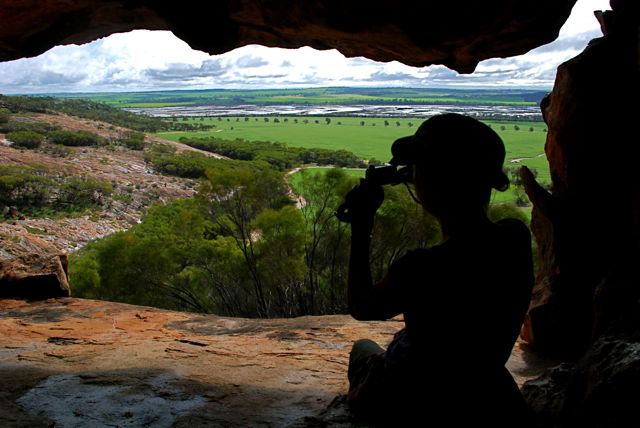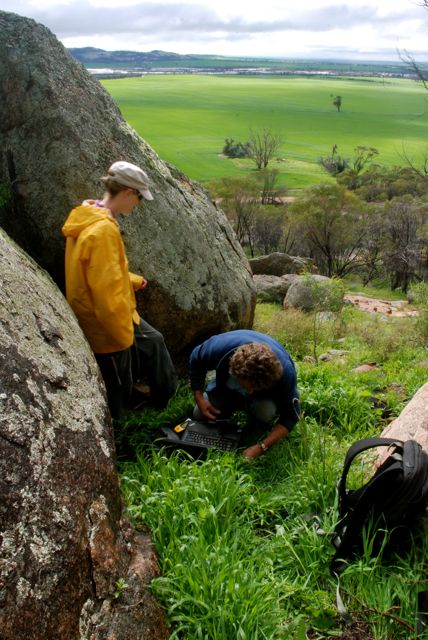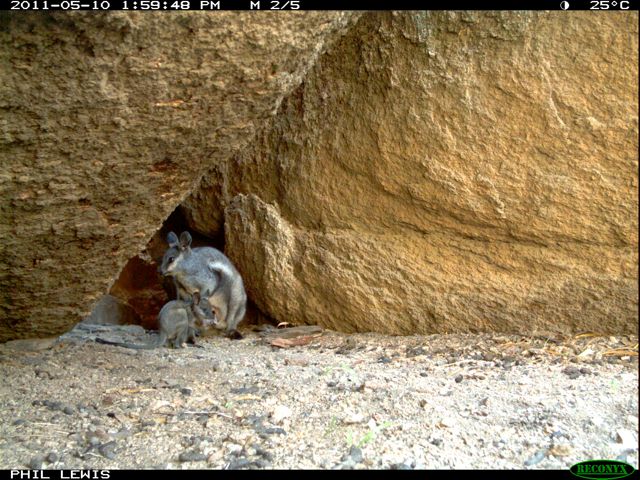Recently I found myself sitting at the back of a sparse stone chamber and looking through a granite arch out over woodland, boulders and fields, all wet and green. This was the prospect from my refuge. I hadn’t expected to find myself sitting high up in a remote and little visited stone cavern looking over a green landscape when I had gotten out of bed much earlier that morning. Things were going well.

I was looking for evidence of the black-flanked rock wallaby with Katherine Howard from WWF, the conservation organization. To get to the cave I and Kath had climbed over a slippery ledge, where green fronds clung in crevices, traversing above a steeply sloping 30 metre drop to the rocks below. There was a serious purpose to our journey to Mt. Stirling in WAs central Wheatbelt, but man, this is fun, was what I was thinking. There was the risk of the fall, and the act of approaching the dark yawn of a remote cave entrance, inside of which lay we knew not what. My hands clung to the stone, I moved forward slowly, my breeze brushed my neck, I felt unquestionably alive.
I was out of the urban bubble, on a massive granite monolith with three WWF conservation professionals, monitoring the presence of Black Flanked Rock Wallabies. These diminutive macropods used to be commonly found on the Darling Scarp behind Perth. With the arrival of the fox at the end of the 1920s the end of their abundance began. Today they persist in the north-west of Australia, but in the south-west they have been reduced to six granite outcrops in the wheatbelt. Most city folk don’t even know what a black flanked rock wallaby looks like.

So did we find any of these animals at Mt. Stirling? Or at least pictures thereof? Listen to this week’s Understorey and find out.
Really Tom, why should anybody give a damn about rock wallabies in the WA wheatbelt, I can hear some people asking? As I walked around Mt. Stirling that day I realized that these animals are mute sentinelsl looking down on a changing Australia. They are the ancient soft brown faces of this country looking down from a stone citadel on disruptive modernity. You may have never seen their white-stripped faces, but their perspective is an important one. It is the secret soul of this country, the old, the original Australia.
